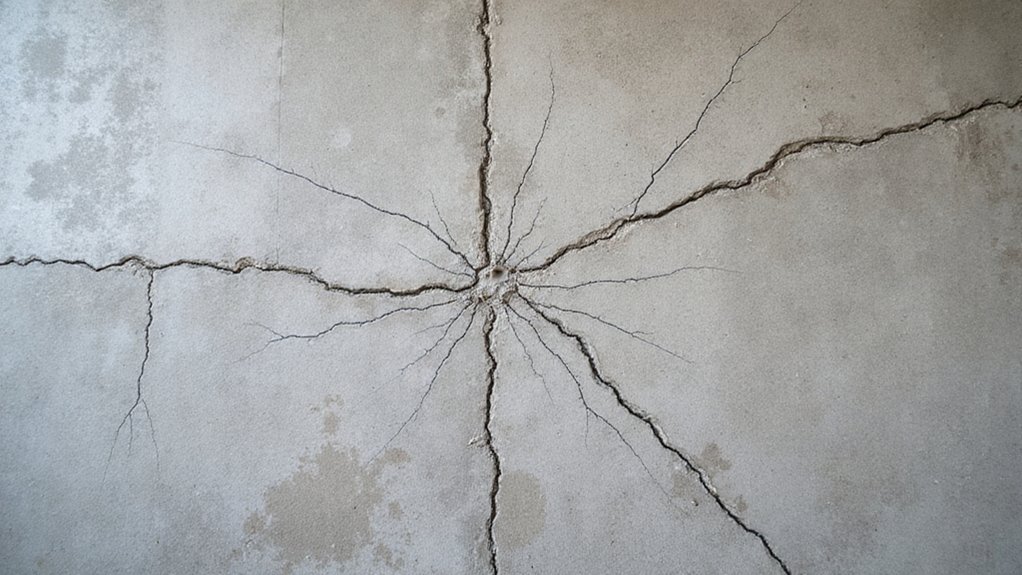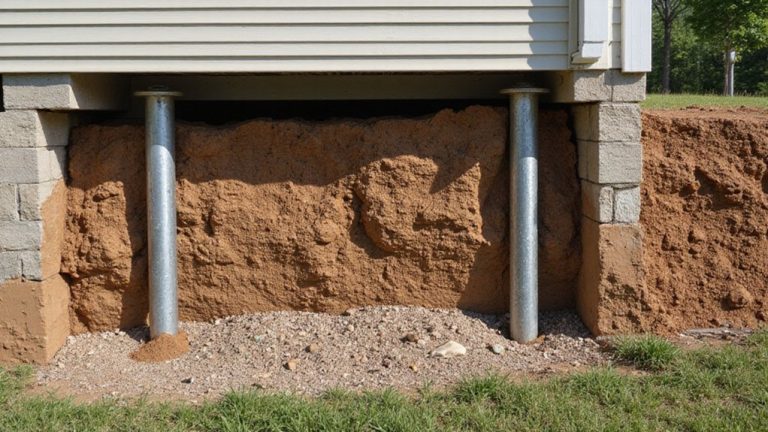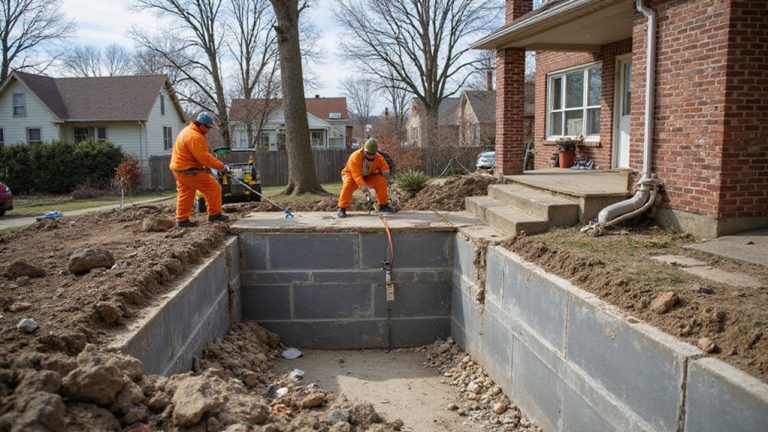Foundation damage can sneak up on you, turning a small issue into a costly nightmare. Your home's structural integrity depends on catching warning signs early. From sagging floors to mysterious wall cracks, these signals shouldn't be ignored. What might seem like minor imperfections could indicate serious underlying problems that threaten your biggest investment. Want to protect your home and avoid potential financial headaches? Keep reading to reveal the critical signs you can't afford to miss.
Common Signs of Foundation Damage
Though foundation problems can be formidable, they're often detectable if you know what to look for. Sagging floors and uneven flooring are telltale signs that something might be wrong beneath your home's surface. You'll want to pay close attention to any unusual changes in your floor's levelness, as these can indicate serious structural shifts. Foundation wall bowing can result from external soil pressure, causing significant damage if left unchecked. Cracks in walls, doors that won't close properly, and gaps around window frames are additional red flags. By staying vigilant and recognizing these early warning signs, you can catch potential foundation issues before they become costly, extensive repairs.
Interior Warning Signals
Inside your home, foundation problems often reveal themselves through subtle yet significant interior warning signals that you can't ignore. Sagging floors might indicate serious structural shifts beneath your foundation. You'll want to pay close attention to uneven wall gaps, which can signal underlying settlement issues that shouldn't be dismissed. Foundation crack inspections by licensed professionals can help identify and diagnose these critical structural warning signs before they escalate into more expensive repairs.
These interior clues aren't just cosmetic concerns—they're potential indicators of deeper foundation damage. When you notice walls separating from floors or doors that suddenly stick, don't panic. Instead, document these changes and consider scheduling a professional inspection to assess the potential risks and prevent costly future repairs.
Exterior Foundation Red Flags
How can you tell if your home's foundation is in distress just by looking outside? Uneven grading around your home's perimeter is a major warning sign. When soil slopes toward your foundation instead of away, water can pool and cause serious damage.
Check for standing water near your home's base, which indicates drainage issues that could compromise structural integrity. Cracks in exterior brick or masonry, especially those wider than 1/4 inch, suggest foundation movement. Shrinking or expanding soil, poor landscaping design, and inadequate drainage can all contribute to these potential problems, signaling it's time to investigate further.
Understanding Different Types of Foundation Cracks
When foundation cracks appear, they're not all created equal, and understanding their characteristics can help you assess potential structural risks.
Vertical and diagonal cracks might indicate shifting soil patterns, while horizontal cracks often suggest serious hydrostatic pressure problems. Hairline fractures less than 1/8 inch wide are typically less concerning, but wider cracks demand immediate attention. You'll want to monitor these openings, measuring their width and tracking any changes over time.
If you notice expanding cracks or significant movement, it's imperative to consult a professional foundation expert who can provide an extensive assessment.
Soil Conditions and Their Impact on Foundation Health
Because soil plays an essential role in foundation stability, homeowners must understand how different soil types can significantly impact their home's structural integrity. Clay, sandy, and loamy soils each respond differently to moisture and pressure, affecting ground stability factors.
When soil moisture levels fluctuate dramatically, your foundation can shift, crack, or settle unevenly. Expansive clay soils are particularly problematic, expanding when wet and contracting when dry. By monitoring soil conditions and drainage around your home, you'll catch potential foundation issues early. Regular inspections and proper landscaping can help protect your home's critical foundation from soil-related damage.
When to Call a Professional Inspector
The complexity of foundation damage frequently necessitates professional proficiency to guarantee precise diagnosis and successful restoration. When you notice persistent warning signs, it's imperative to schedule an inspection with a qualified contractor.
A professional inspector can provide expert observations, preventing minor issues from escalating into costly structural repairs. Don't wait until the problem becomes unmanageable—act proactively to protect your home's foundation and your investment.
- Visible foundation cracks wider than 1/4 inch
- Significant water drainage issues around your home's perimeter
- Doors and windows that consistently stick or won't close properly
Preventative Maintenance Strategies
Since foundation maintenance isn't typically a homeowner's favorite task, proactively protecting your property can save you substantial time and money in the long run. You'll want to prioritize regular proactive property inspections to catch potential issues early.
Simple foundation repair techniques like maintaining proper drainage, monitoring soil moisture, and keeping trees at a safe distance can prevent costly damage. Check your foundation quarterly for cracks, water intrusion, or uneven settling. By staying vigilant and addressing minor concerns quickly, you'll protect your home's structural integrity and avoid expensive repairs down the road.
Repair Options and Cost Considerations
Numerous foundation repair methods exist, ranging from minor fixes to extensive reconstruction, each with unique cost implications for homeowners.
When budgeting repair costs, you'll want to consider these key strategies:
- Professional assessment to accurately estimate repair timelines
- Comparing quotes from multiple foundation repair specialists
- Understanding the long-term value of all-encompassing repairs
Your approach should balance immediate expenses with potential future damage prevention. While repair costs can seem overwhelming, investing in timely foundation maintenance can save you thousands in structural repairs.
Frequently Asked Questions
How Long Does a Typical Foundation Repair Take to Complete?
You'll find foundation repairs typically take 2-5 days, but complex issues can stretch into an extended construction period requiring specialized equipment and careful professional assessment.
Can I Sell My House With Existing Foundation Issues?
You can sell your house with foundation issues, but you'll need a thorough foundation assessment process and professional inspection recommendations to disclose problems transparently and potentially negotiate a fair sale price.
Will Homeowners Insurance Cover Foundation Damage and Repair Costs?
You'll need to review your specific policy, as most homeowners insurance won't cover foundation repair costs unless damage stems from sudden, unexpected events like burst pipes during the foundation inspection process.
Do New Homes Ever Experience Serious Foundation Problems?
You might encounter foundation issues in new homes due to soil compaction concerns and moisture intrusion risks, which can develop even with recent construction and proper initial groundwork.
How Much Does Foundation Damage Decrease Property Value?
Foundation damage can slash your property value by 10-30%, depending on repair costs and visible foundation inspection methods. You'll want professional assessment to minimize potential financial losses.



